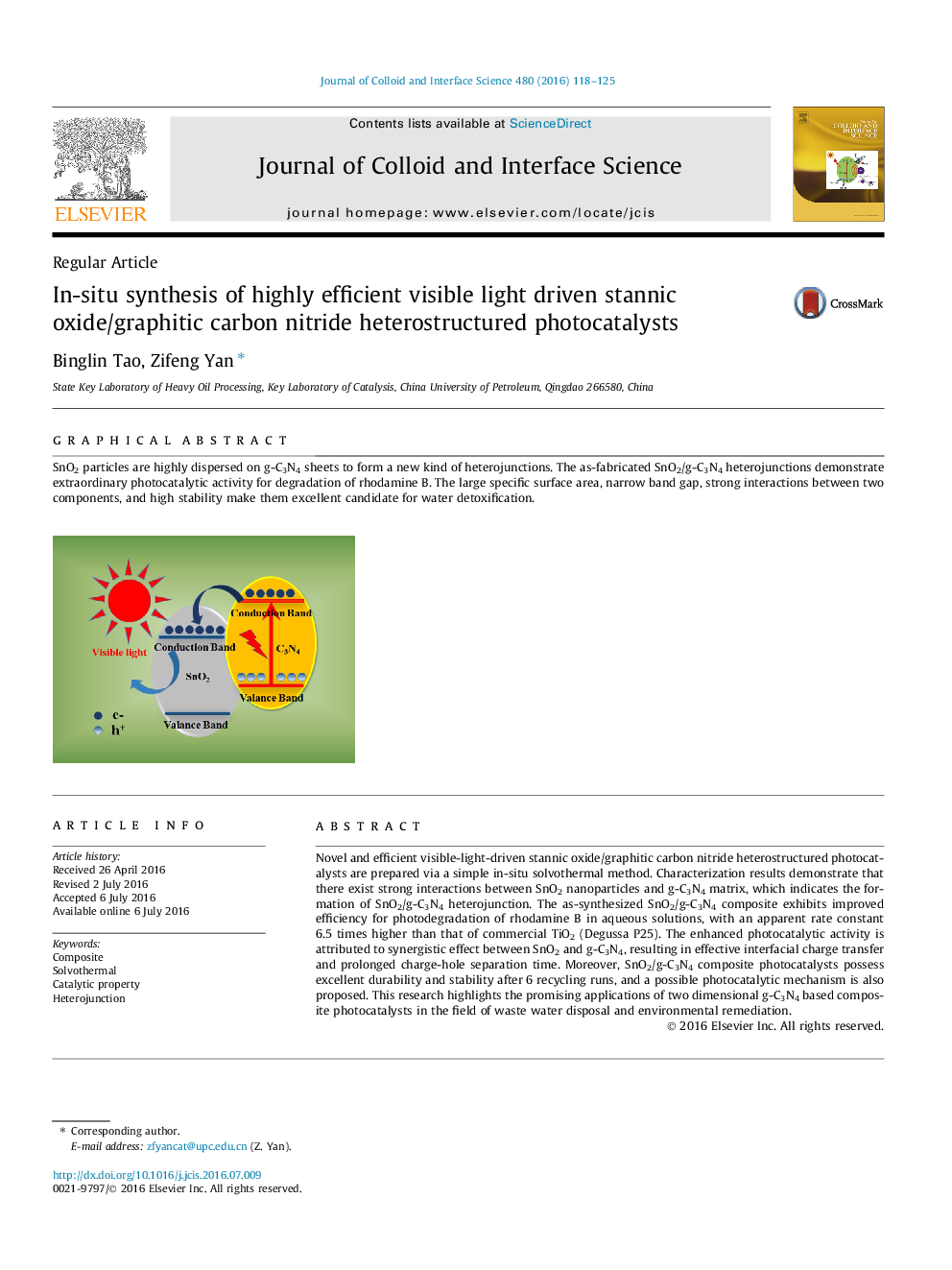| Article ID | Journal | Published Year | Pages | File Type |
|---|---|---|---|---|
| 606158 | Journal of Colloid and Interface Science | 2016 | 8 Pages |
Novel and efficient visible-light-driven stannic oxide/graphitic carbon nitride heterostructured photocatalysts are prepared via a simple in-situ solvothermal method. Characterization results demonstrate that there exist strong interactions between SnO2 nanoparticles and g-C3N4 matrix, which indicates the formation of SnO2/g-C3N4 heterojunction. The as-synthesized SnO2/g-C3N4 composite exhibits improved efficiency for photodegradation of rhodamine B in aqueous solutions, with an apparent rate constant 6.5 times higher than that of commercial TiO2 (Degussa P25). The enhanced photocatalytic activity is attributed to synergistic effect between SnO2 and g-C3N4, resulting in effective interfacial charge transfer and prolonged charge-hole separation time. Moreover, SnO2/g-C3N4 composite photocatalysts possess excellent durability and stability after 6 recycling runs, and a possible photocatalytic mechanism is also proposed. This research highlights the promising applications of two dimensional g-C3N4 based composite photocatalysts in the field of waste water disposal and environmental remediation.
Graphical abstractSnO2 particles are highly dispersed on g-C3N4 sheets to form a new kind of heterojunctions. The as-fabricated SnO2/g-C3N4 heterojunctions demonstrate extraordinary photocatalytic activity for degradation of rhodamine B. The large specific surface area, narrow band gap, strong interactions between two components, and high stability make them excellent candidate for water detoxification.Figure optionsDownload full-size imageDownload high-quality image (104 K)Download as PowerPoint slide
